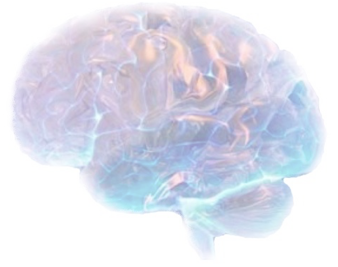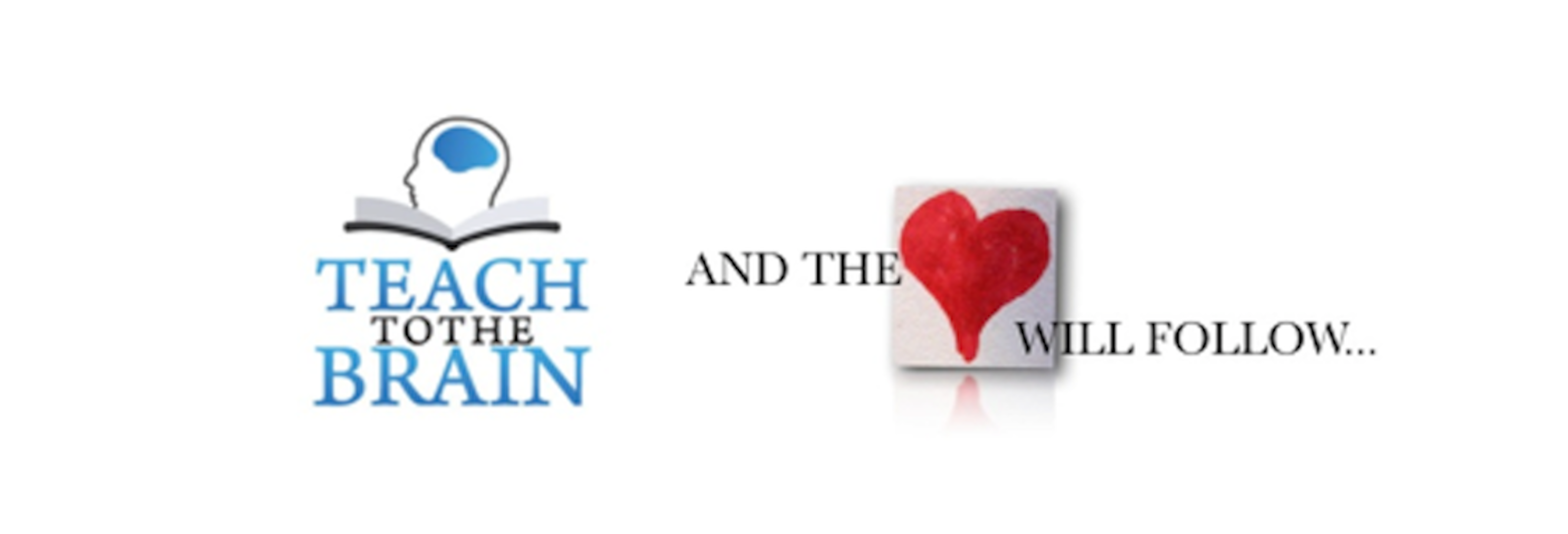The instructional challenges facing teachers, parents, coaches and leaders today are complex to say the least. There is no ‘one-size fits all’ remedy. However, at Teach To The Brain™ we contend that the most common issue relevant to all and to all learning environments is the brain itself. Recent brain research has cast new light on the brain and how it learns. Many of the teaching strategies and methods that exist today are aligned with these new findings. Others will simply require instructors to adapt and modify skills they already use in small but powerful ways.
The instructional challenges facing teachers, parents, coaches and leaders today are complex to say the least. There is no ‘one-size fits all’ remedy. However, at Teach To The Brain™ we contend that the most common issue relevant to all and to all learning environments is the brain itself. Recent brain research has cast new light on the brain and how it learns. Many of the teaching strategies and methods that exist today are aligned with these new findings. Others will simply require instructors to adapt and modify skills they already use in small but powerful ways.
Click here! We’ll explain the professional development resources & services available to help you master brain responsive strategies. Guide yourself and those you serve more effectively! Experience achievement and success at the highest levels!
The environment and the strategies implemented during the learning time are critical to the motivation, engagement, and mastery of the concepts being presented. Although the objectives and standards of what to teach are usually set in place, the execution and assessment of those standards can be creatively orchestrated and implemented by the artist we all know as the “teacher.” Why? Because we lose students when we don’t!
The environment and the strategies implemented during the learning time are critical to the motivation, engagement, and mastery of the concepts being presented. Although the objectives and standards of what to teach are usually set in place, the execution and assessment of those standards can be creatively orchestrated and implemented by the artist we all know as the “teacher.” Why? Because we lose students when we don’t!
What does current brain research tell us?
All Brains Move Through Developmental Stages
Each brain that is born healthy will follow a certain schedule of developmental growth and change. The starting points and durations of each different phase of development may vary greatly amongst groups of learners. It is essential that teachers, parents, coaches and leaders recognize and adjust for differences and challenges they see as learners move through phases of development.
All Brains Move Through Developmental Stages
Each brain that is born healthy will follow a certain schedule of developmental growth and change. The starting points and durations of each different phase of development may vary greatly amongst groups of learners. It is essential that teachers, parents, coaches and leaders recognize and adjust for differences and challenges they see as learners move through phases of development.
Energy Moves Through Our Brains in Cycles and Rhythms
The brain is designed to work in short bursts of high energy output followed by brief periods of rest and reflection; as opposed to a constant state of attention. Hormones, diet and emotions trigger chemical fluctuations which impact attention, memory and learning. It is essential to recognize these variations when planning and providing ‘optimal learning’ experiences for the students.
Presence of Safety Helps the Brain Thrive
A presence of safety is the knowing that a student develops, regarding the degree of dignity and respect that a teacher, parent, coach and/or leader is going to extend to that student and others. When the student can rest assured that the adult in charge is going to provide a safe environment free from strategies that elicit guilt or shame, after basic safety is provided, the learning brain may thrive.
Presence of Safety Helps the Brain ThriveA presence of safety is the knowing that a student develops, regarding the degree of dignity and respect that a teacher, parent, coach and/or leader is going to extend to that student and others. When the student can rest assured that the adult in charge is going to provide a safe environment free from strategies that elicit guilt or shame, after basic safety is provided, the learning brain may thrive.
Emotions: Critical to Survive and Critical to ThriveExcessive emotions can impair rational thinking, while the absence of emotion can be equally damaging to rationality and clear thought. It is possible to utilize one’s conscious thoughts to focus on positive emotions such as love, inspiration and motivation, which in turn enhances learning and memory. The emotional state of the learner is crucial to the brain’s ability to retain and apply the desired information.
Emotions: Critical to Survive and Critical to ThriveExcessive emotions can impair rational thinking, while the absence of emotion can be equally damaging to rationality and clear thought. It is possible to utilize one’s conscious thoughts to focus on positive emotions such as love, inspiration and motivation, which in turn enhances learning and memory. The emotional state of the learner is crucial to the brain’s ability to retain and apply the desired information.
Finding Meaning by Identifying Patterns and ConnectionsWe gain meaning three ways; through patterns, emotions, and relevance. The brain processes patterns, emotions and perceived relevance as it seeks to assign meaning to new content. The brain is less effective at retaining isolated facts and learns more effectively when new learning is presented in real life context and is achieved some way other than the traditional lecture and note-taking format.
Finding Meaning by Identifying Patterns and Connections
We gain meaning three ways; through patterns, emotions, and relevance. The brain processes patterns, emotions and perceived relevance as it seeks to assign meaning to new content. The brain is less effective at retaining isolated facts and learns more effectively when new learning is presented in real life context and is achieved some way other than the traditional lecture and note-taking format.
The Brain Thrives on Enrichment i.e., Music, Theater, Debate, Dance, etc…
The brain is rarely overstimulated. It perceives parts and wholes simultaneously. It thrives on music, role play, dance, and the arts, as these activities provide an emotional backdrop or framework to the learning content and objectives being mastered.
The Brain Thrives on Enrichment i.e., Music, Theater, Debate, Dance, etc…
The brain is rarely overstimulated. It perceives parts and wholes simultaneously. It thrives on music, role play, dance, and the arts, as these activities provide an emotional backdrop or framework to the learning content and objectives being mastered.
Memory: Recreating Pathways in the Brain
Human memory is not stored away as in the memory banks of a computer. Memory is actually the recreation of a particular neuro-chemical pathway which allows the ‘user’ to “remember” or to “recall” events and scenarios which took place previously. When new information is connected to positive emotion and memorable enrichment then learning and memory improve.
Memory: Recreating Pathways in the Brain
Human memory is not stored away as in the memory banks of a computer. Memory is actually the recreation of a particular neuro-chemical pathway which allows the ‘user’ to “remember” or to “recall” events and scenarios which took place previously. When new information is connected to positive emotion and memorable enrichment then learning and memory improve.
Movement and Learning – the Mind-Body Link
The body’s physiological states impact the electro-chemical responses of the brain and consequently have the potential to enhance or hinder learning significantly. When learning bodies remain still and quiet for more than 15-20 minutes, they begin to seek opportunities to get up and move. It is beneficial to the instructor and the class when movement is built into the planned lesson and is utilized not only to break up the routine but to provide opportunity for the learners to make their own mind-body connections to the new information.
Feeding the Brain for Optimal Growth!Nutritionally speaking, the brain needs protein, trace minerals, water and B-vitamins to maintain optimum efficiency. Learning seems to improve when carbohydrates are kept to a minimum and high protein snacks occur more frequently throughout the day.
Assessment – How We Know the Brain Has LearnedAssessment strategies and the philosophies behind them are evolving and changing. It is crucial that we adopt consistent and effective policies in this area. More specifically, policies that assess the learning as opposed to the behavior of the individual.
The Unique and Adaptive BrainThe brain is unique due to the individual environment in which it grows and develops. The brain has also proven to be highly adaptive; the wide variety of human experience and cultural history serving as evidence. As a learner the brain is drawn toward novelty and problem-solving opportunities. Single answer, one way learning and testing simply fails to stimulate or motivate desire in the learner.
The Needs of the Social BrainThe brain, in all it’s uniqueness, appears to also be especially geared towards social interaction and cooperation with other brains. Language is the brain’s primary form of communication and the key to social cooperation and civilization as we know it.

